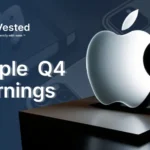
Morgan Stanley boldly predicted that iPhone sales will peak in 2015, potentially jeopardizing Apple’s hegemony in the smartphone industry. Analysts predicted a nearly 6% fall in iPhone sales in Apple’s 2016 fiscal year due to market saturation in industrialized nations and higher prices in other markets, excluding China. However, fast forward to today, and we see a very different reality. The iPhone has shown that resiliency is at the core of Apple’s success by not only weathering the storm but also thriving.
While the predictions of a sales decline seemed plausible at the time, Apple took several strategic steps to evolve and adapt to the changing market dynamics. These initiatives were crucial in beating the odds and according to Statista,
The iPhone’s sustained success has been largely attributed to its expansion into new markets, particularly India. Instead of solely depending on imports, Apple decided to produce iPhones locally in India, which greatly reduced prices and increased affordability for Indian customers. This move not only increased sales but also bolstered Apple’s presence in a highly promising market.
Diverse Product Lineup
Apple recognized the importance of diversification. Part of this diversification was Apple’s announcement of its first iPhone SE budget phone in March 2016. This strategy attracted a broader customer base and helped maintain sales momentum.
Enhanced Features and Innovation
Apple’s commitment to innovation is a cornerstone of its success. The company consistently introduced new features, enhanced performance, and improved the overall user experience. This dedication to innovation, coupled with regular iOS updates, encouraged existing iPhone users to upgrade to newer models.
Market Adaptability and Rising Trends
Apple’s resilience also stems from its ability to adapt to emerging trends in the global smartphone market.
Market Diversification
While some markets may have experienced saturation, others, like India, still offer tremendous growth potential. Apple’s focus on diversifying its market presence allowed it to tap into new opportunities.
Services and Ecosystem
Apple shifted its focus from being solely a hardware company to becoming a services and ecosystem giant. The Apple ecosystem, including Apple Music, Apple TV+, iCloud, and the App Store, continues to grow, providing a recurring revenue stream that complements iPhone sales.
Sustainability and Corporate Responsibility
Apple’s commitment to sustainability and corporate responsibility has resonated with consumers globally. This approach not only aligns with current consumer preferences but also enhances the brand’s image.
Morgan Stanley’s prediction of a sharp decline in iPhone sales was a cautionary tale of the ever-changing tech landscape. Apple’s ability to adapt, diversify, and innovate has allowed it to defy these forecasts. The iPhone remains a symbol of resilience in the face of challenges, proving that even when the odds seem stacked against it, Apple continues to evolve, expand, and exceed expectations. The iPhone design has continued to evolve even though critics say the newer versions look very much alike in design. With the introduction of the USB-C to the iPhone 15 and upcoming Apple products, Apple has further integrated its products into the smartphone system. While this arguably was forced upon the biggest company in the world by market cap by the EU, it is a welcome development.
Looking ahead, it is clear that the iPhone’s journey is far from over. With a commitment to sustainability, expanding into new markets, and a focus on innovation, Apple’s iPhones will probably maintain a strong position in the smartphone market. Apple still has very little presence in African nations who primarily reply on overseas orders especially used iPhones to plug into the Apple ecosystem. African is an untapped market with a growing middle class, many of whom have stuck to budget Android devices. Apple sells refurbished phones too and if they were to tap into the African market, they could be generating even more revenue.
The iPhone’s big journey from the brink of predicted decline to sustained success should be a lesson for other smartphone makers or other smart device makers. Some at the time thought Apple would take precautionary steps especially in the area of pricing but they stood firm and the rest as they say is history.
Discover more from TechBooky
Subscribe to get the latest posts sent to your email.




